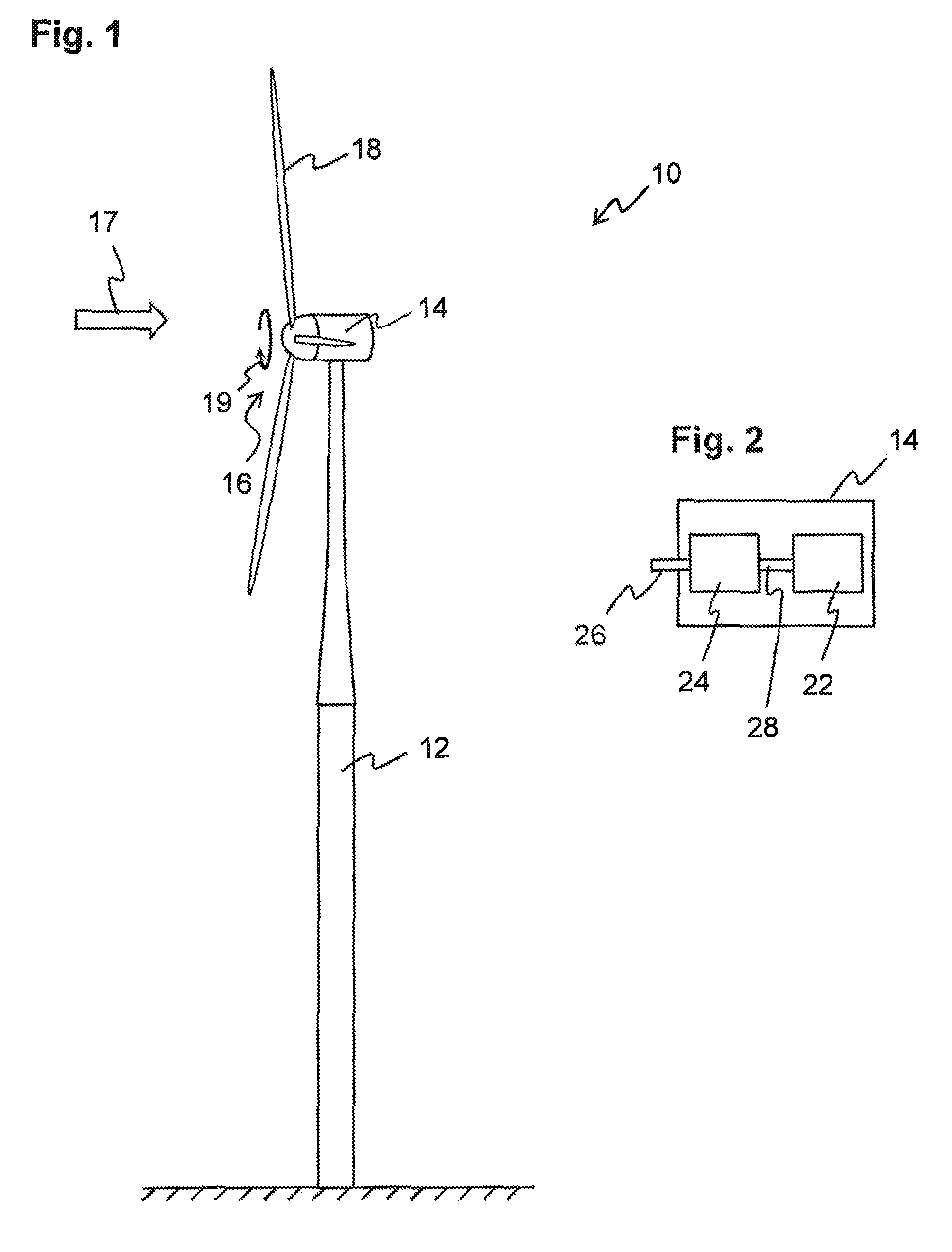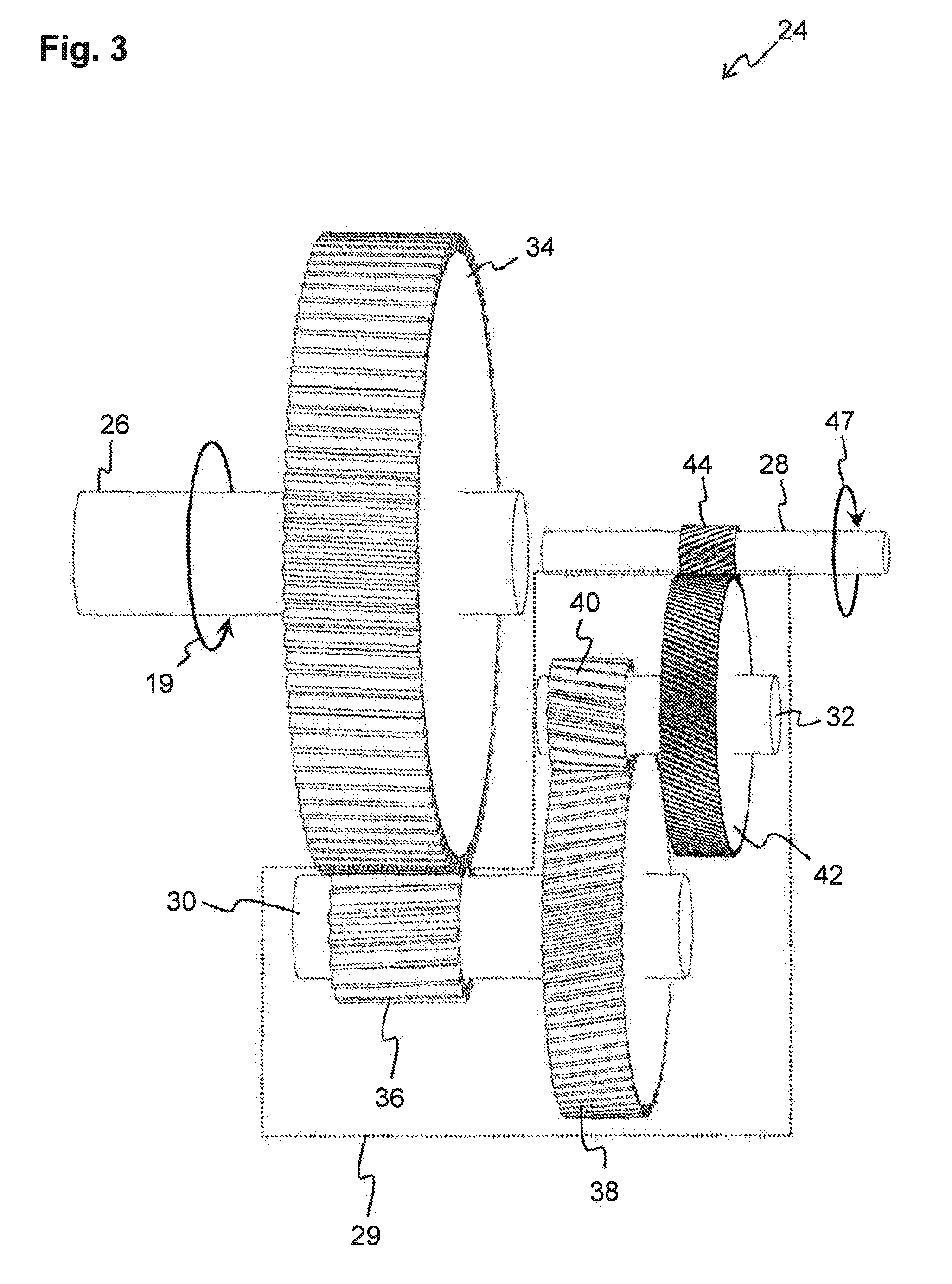Stationary gear unit
a technology of gear unit and gear box, which is applied in the direction of gearbox, toothed gearing, engine fuction, etc., can solve the problems of time-consuming and difficult access to wind turbines by service personnel
- Summary
- Abstract
- Description
- Claims
- Application Information
AI Technical Summary
Benefits of technology
Problems solved by technology
Method used
Image
Examples
Embodiment Construction
[0059]Wind turbine gear units of prior art, which are generally of the planetary gear type, have a few weaknesses. By way of example, in order to provide a reasonably even distribution of the load between the planet gears, while maintaining reasonably achievable requirements on manufacturing tolerances, at least the sun wheel is generally allowed to self-align in the radial direction. As helical gears are generally used for minimizing wind turbine noise, the shafts of a gear unit are subjected to axial thrust, which is taken up by thrust bearings in the gear unit housing. The rotor shaft typically transmits very high levels of torque to the gear unit; hence, the radial and axial load on the input shaft bearings may, in a typical gear unit, be very high. The high load may cause the gear unit housing to flex or yield, leading to increased axial bearing play and requiring substantial gearing backlash. Such axial play may limit the lifetime of the turbine; hence, the gear unit housing n...
PUM
 Login to View More
Login to View More Abstract
Description
Claims
Application Information
 Login to View More
Login to View More - R&D
- Intellectual Property
- Life Sciences
- Materials
- Tech Scout
- Unparalleled Data Quality
- Higher Quality Content
- 60% Fewer Hallucinations
Browse by: Latest US Patents, China's latest patents, Technical Efficacy Thesaurus, Application Domain, Technology Topic, Popular Technical Reports.
© 2025 PatSnap. All rights reserved.Legal|Privacy policy|Modern Slavery Act Transparency Statement|Sitemap|About US| Contact US: help@patsnap.com



